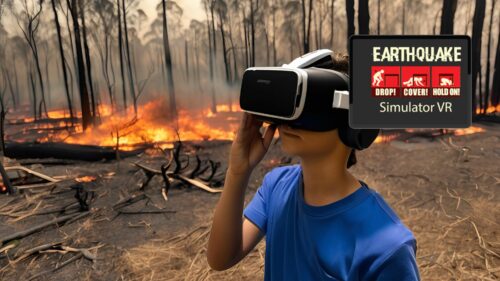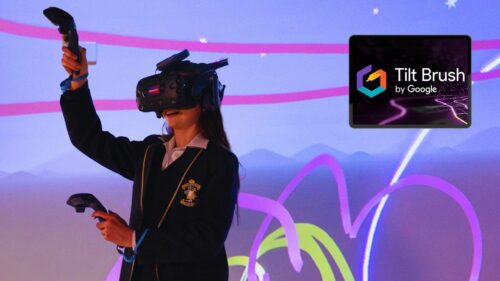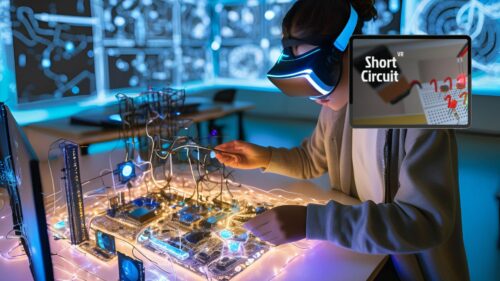Task Summary
Students will create their own piece notating a piece of music using audio reactive brushes in Tilt Brush.
Learn MorePreparation
Students are expected to:
- Have some background in using IMVR.
- Have some background in using the HHVR headsets.
- Have some understanding on how to use Tilt Brush and the audio reactive brushes (see tutorial if need be).
- Have a song/ piece of music given to the teacher (optional).
- Have some background in using the AR Gallery function on Google Arts and Culture (tutorial here).
Teachers should make sure that:
- IMVR headsets are calibrated and charged.
- Mobile Devices should be charged and have the latest version of the Google Arts and Culture app.
- They are familiar with Tilt Brush experience and the Audio Reactive brushes using IMVR.
- They are familiar with using the AR Gallery function on Google Arts and Culture (tutorial here).
- Teacher has a playlist on a music platform (e.g. spotify, window media player, iTunes etc) either collated by student choices, or teacher choices that has been saved/ accessed on the IMVR PC.
- Visual Music Notation Teaching Deck has been checked and the teacher has enabled the deck’s accessibility so students can access them.
- Students are divided into pairs or groups depending on how many devices are available. A suggested rotation cycle may be:
| Group | Round 1 | Round 2 | Round 3 |
| Group 1 | IMVR | Google Arts & Culture | HHVR |
| Group 2 | HHVR | IMVR | Google Arts & Culture |
| Group 3 | Google Arts & Culture | HHVR | IMVR |
This may differ based on student numbers and number of IMVR stations
Learning Sequence
- Ask students to close their eyes and listen to a piece of music (your choice or from this playlist) and visualise what it would look like notated. What colours did they see? What shapes? Any images? Ask them to respond on slide 2 of their Student Digital Notebook Visual Music Notation
Alternatively, students could have some paper and textas and draw as they listen to what they ‘see’ in the music.
Explain to students that the ability to ‘visualise’ music and notate in different ways is important to the creative process. Show them 30 seconds of one of the following pieces from this playlist Classical Music Visualization – YouTube and ask them to respond to on slide 3 of their Student Digital Notebook Visual Music Notation
Introduce the stations to students and their tasks.
Station 1 – Tilt Brush
Using the Audio Reactive Brushes in Tilt Brush, students create their own form of notation or visual piece to a piece of music. Depending on the lesson, the teacher may already have some pre-loaded choices in a playlist the students can choose from, or the teacher may have collated personal song choices from the students for them to use.
Station 2 – HHVR
Studentsview the 360 videos that show examples of music notation in a visual medium. They are to answer the following discussion questions on slide 6 of their Student Digital Notebook Visual Music Notation:
-
- How does this connect with what you know already about music notation?
- Do you believe using colour/ shapes etc is a viable form of musical notation? Why/why not?
- What place does visual notation have in music?
Station 3 – Kandinsky
Students explore the ‘Play a Kandinsky’ experiment on the Google Arts and Culture App. Students then head to the pocket gallery function on Google Arts and Culture and access the Kandinsky Gallery. As they explore this gallery, they are to answer some questions on chosen pieces on page 7 in their Student Digital Notebook Visual Music Notation
- Students complete the following statement on visual notation of music in their Student Digital Notebook Visual Music Notation:
I used to think __________________ and now I think ______________ because______________________
Download the PDF for more information



